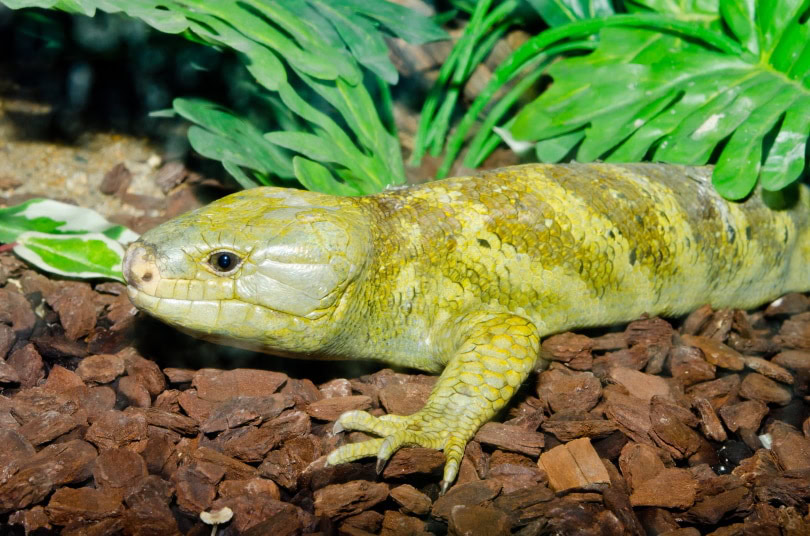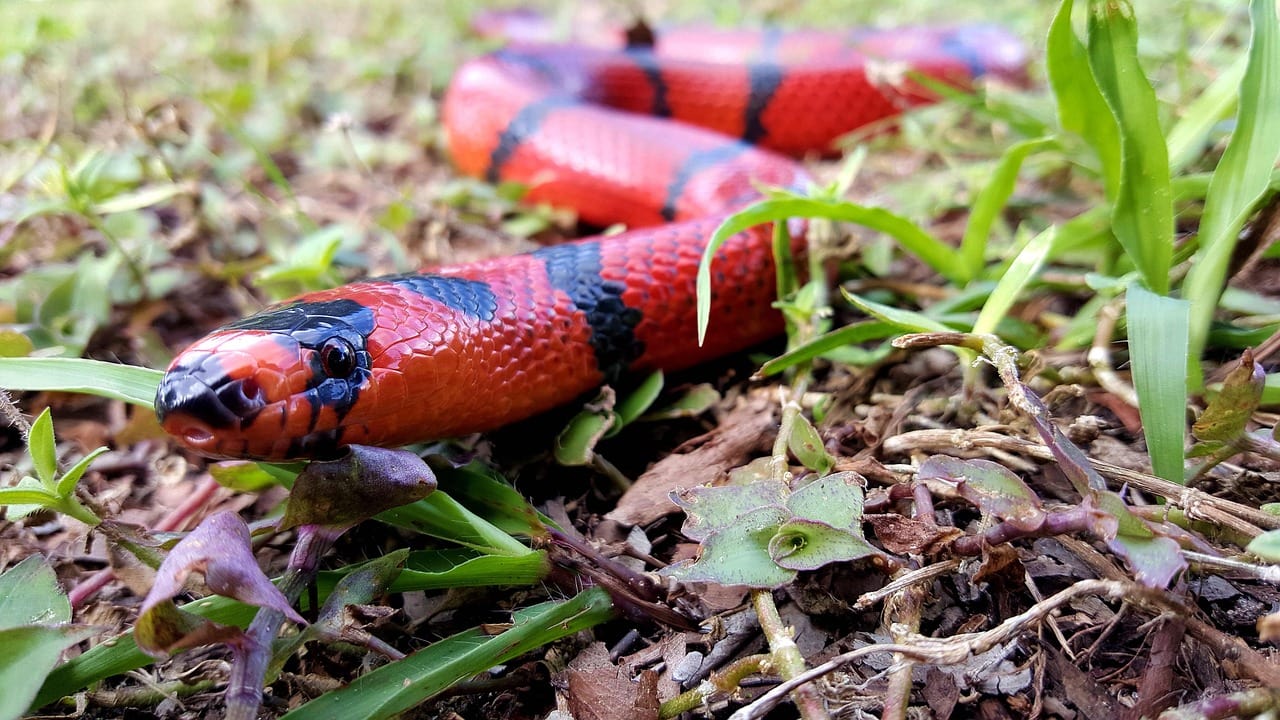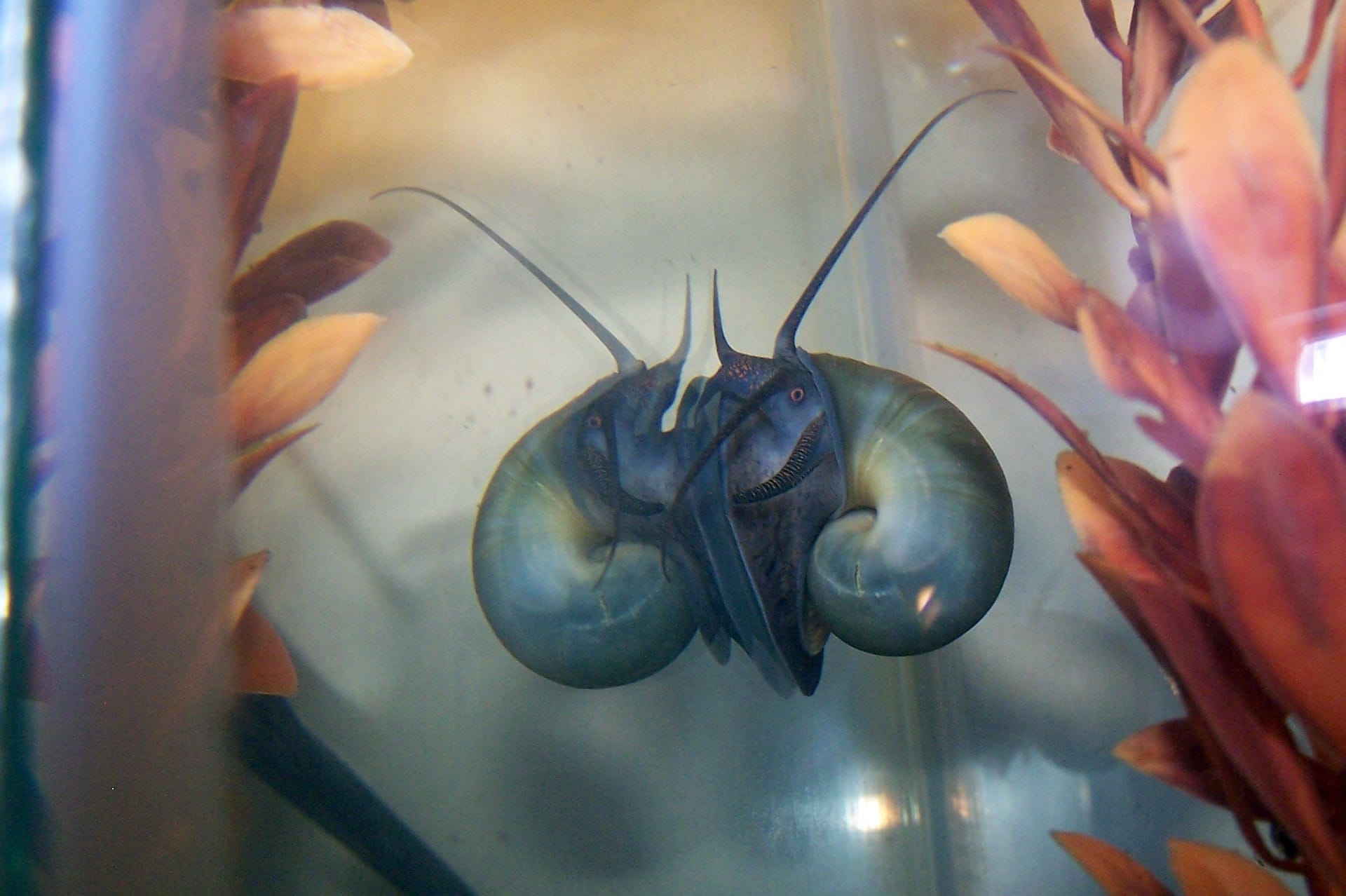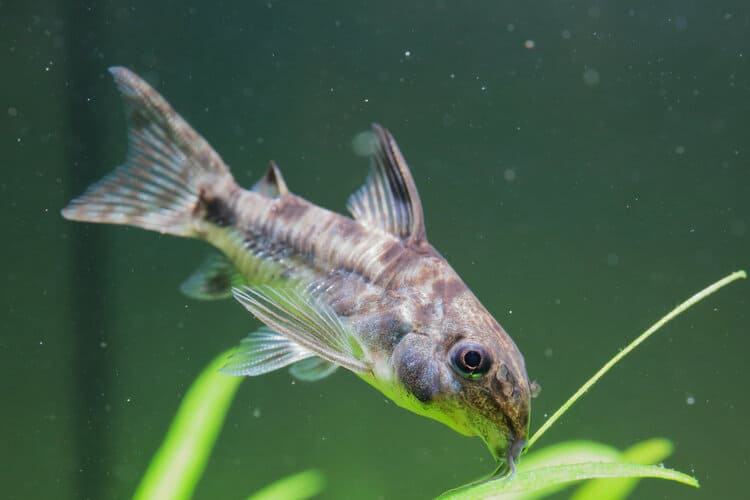Click to Skip Ahead
Many reptiles make good pets, as they thrive in captivity and are relatively simple to care for. You can even find ones that don’t mind being handled and can provide loads of entertainment. The skink is a lesser-known reptile, at least compared to iguanas, geckos, and snakes. However, it represents a diverse reptile group with more than 1,500 members, including ones with no legs that move similarly to snakes.
But not all 1,500 skink species make great pets. At present, seven types of skinks are commonly considered to be ideal for domestic households. Here, we get a closer look at each of these unique lizards, so you can figure out which one you might be interested in getting.

The 7 Skinks That Make Great Pets
1. Blue-Tongued Skink
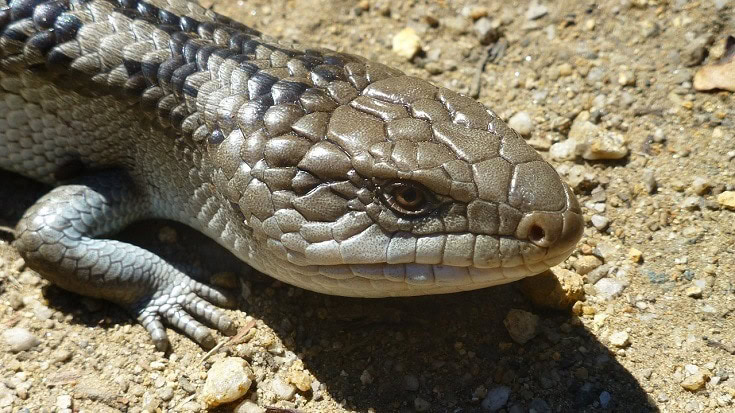
| Appearance: | Banded, scaly, thick |
| Length: | 18+ inches |
| Lifespan: | 20 years |
| Price: | $150–$5,000 |
Blue-tongued skinks are aptly named after their blue tongues. While several skink species make up this group, they’re all closely related, and caring for them is about the same. These are probably the most popular of all skinks to keep in captivity, and you’ll find many breeders working with them today.
This type of skink is native to New Guinea and Australia, spanning a wide range of different environments within the region. As such, you’ll have to keep a blue-tongued skink’s enclosure warm at all times to mimic the natural habitat where they come from. They also require quite a bit of space since these reptiles can easily achieve lengths of 2 feet when fully grown.
Feeding a blue-tongued skink requires a combination of plant matter and insects. These skinks are omnivores, and they thrive when eating a wide variety of fruits, vegetables, insects, and even small invertebrates.
- Also Read: Northern Blue-Tongued Skink
2. Blue-Tailed Skink
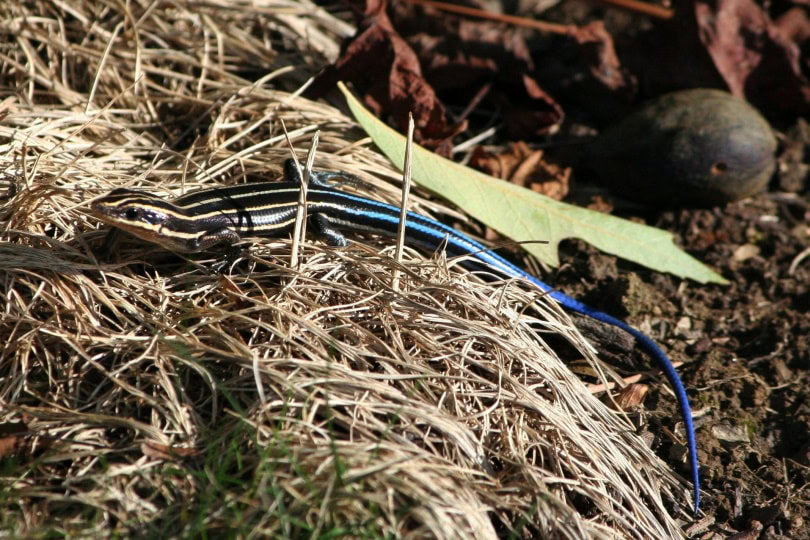
| Appearance: | Bright blue tail, five distinctive stripes |
| Length: | 4–8 inches |
| Lifespan: | 6–10 years |
| Price: | $15–$50 |
The blue-tailed skink is another group of skinks that all share the similar trait of a bright blue tail. They are native to North America, particularly, the southeastern United States. You’ll also hear them called five-lined skinks, and there are three main types: the five-lined skink, the southeastern five-lined skink, and the broadhead skink. When mature, they average just 4–8 inches in length, making them much smaller than blue-tongued skinks.
All three of these subspecies are popular as pets. Caring for them is all relatively equal, and they’re considered to be easy pets to take care of. They’re named after the five distinct lines that run down the sides of their bodies and their bright blue tails. Males will remain vibrant and colorful their whole lives, but females’ coloring generally fades with age.
You’ll mostly find blue-tailed skinks in moist areas, though they will inhabit a wide range of different environments. Often, they’re located in or near mixed forests, but you’ll find them all around in their native regions. While they’re mostly terrestrial and will spend a great deal of time on the ground, blue-tailed skinks are also great climbers that will climb up walls, trees, rocks, and other obstacles to avoid danger.
- Related Read: What Do Blue-Tailed Skinks Eat in the Wild and as Pets?
3. Fire Skink
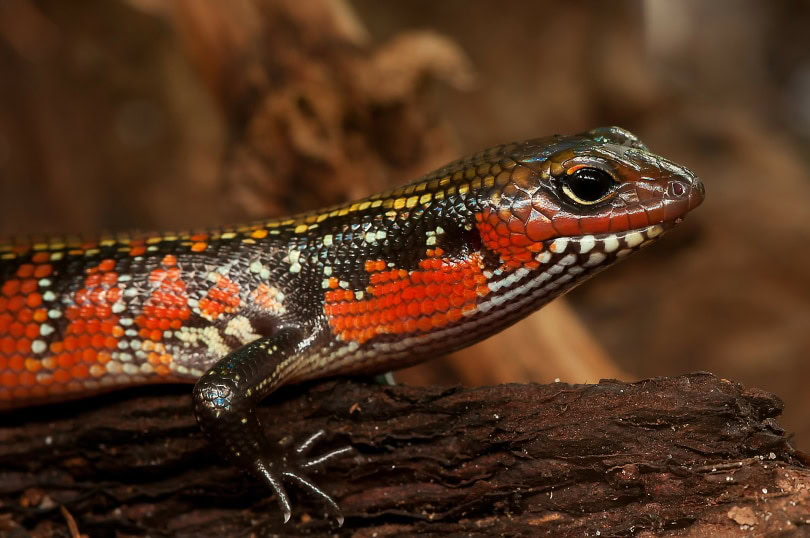
| Appearance: | Vibrant orange-red color |
| Length: | 15 inches |
| Lifespan: | 15 years |
| Price: | $20–$100 |
Fire skinks are some of the most vivid and colorful of all skink species, and many think of them as the most beautiful. As you might guess from the name, these are bright red skinks with incredible patterning of yellows and oranges that look similar to fire. Incredibly, the skink’s mood can even affect their coloration, with hues darkening or lightening with the skink’s feelings.
These skinks are almost completely terrestrial, so they need large terrariums with plenty of floor space. Once mature, fire skinks are about 15 inches long on average, so you’ll need a 40-gallon aquarium or larger to house an adult. They’re native to tropical regions of West Africa, so they require a good deal of humidity. Habitats must remain between 80°F and 95°F, but other than getting the conditions correct, caring for a fire skink is quite simple.
Fire skinks have exploded in popularity as pets. This is largely because they’re one of the skink species that become well-adapted to handling. Many captive specimens can even be fed by hand! You just have to make sure you never drop them or grab their tails. They’re not aggressive, exhibiting a milder temperament, and often seeming to be a bit shy.
4. Monkey-Tailed Skink
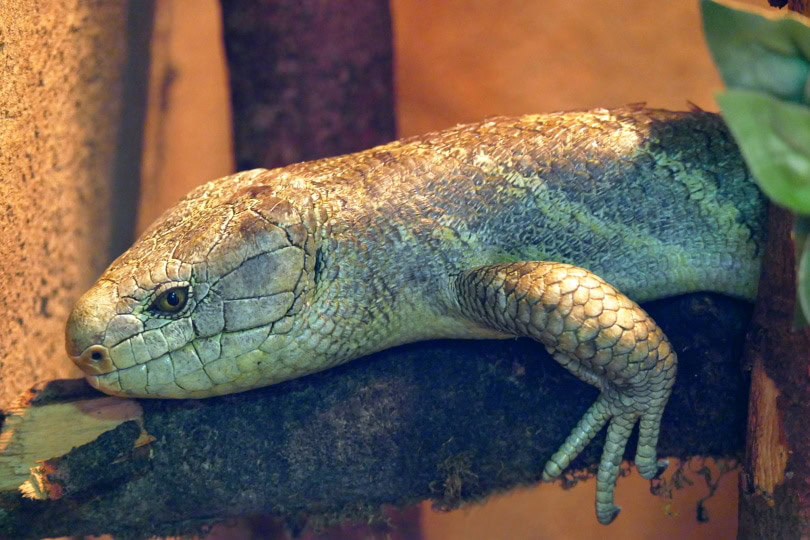
| Appearance: | Prehensile tail, green, brown, black |
| Length: | 32 inches |
| Lifespan: | 30 years |
| Price: | $450–$650 |
The monkey-tailed skink is so named because it has a prehensile tail, which means that it can use its tail to help grab onto the branches on which it climbs. Naturally, this indicates that the monkey-tailed skink prefers to spend its time in the trees, rather than on the ground like many other skinks. Of course, that’s far from the only special trait this species sports that sets it apart from other skinks.
Monkey-tailed skinks, also called Solomon Island skinks, are actually unique. Unlike most skinks, these lizards are strictly herbivores. They eat just plant matter, no insects or invertebrates. This makes them an ideal choice for anyone averse to the idea of handling feeder insects on a regular basis. These skinks are nocturnal, though, so you can expect to miss out on a great deal of their activity.
Monkey-tailed skinks are rather social skinks. In the wild, they sometimes live in small colonies known as a circulus. However, these are large lizards, reaching sizes up to 30 inches as adults! Trying to keep a circulus would require a huge amount of space. Within the circulus, skinks care for the offspring as a group. These skinks are ovoviviparous, which means their eggs hatch within the female’s body after gestation and young are born live. Babies are usually born solo, though, on rare occasions, two can be born simultaneously.
- See Also: Do Chimpanzees Make Good Pets?
5. Red-Eyed Crocodile Skink
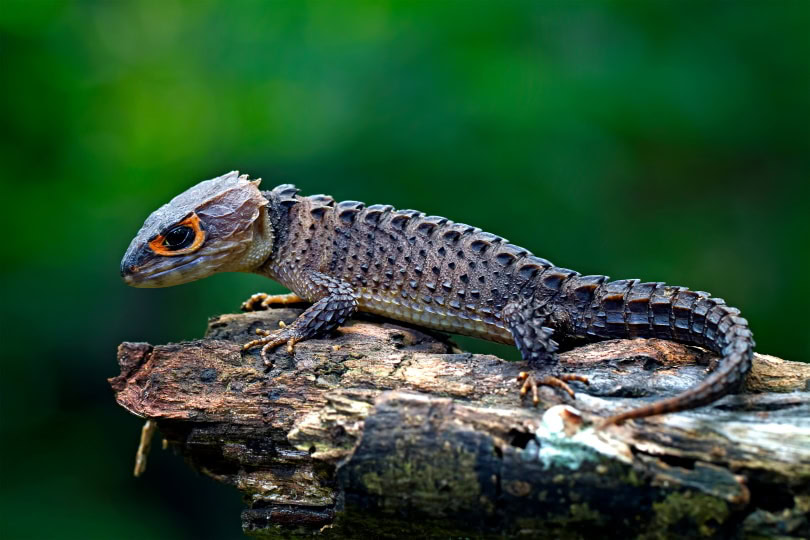
| Appearance: | Ridged, spiny, orange eye outline |
| Length: | 1.5 to 10 inches |
| Lifespan: | 10 years |
| Price: | $180–$275 |
Red-eyed crocodile skinks have an incredible appearance, with red rings around the eyes and armor-plated bodies that make them look sort of like wingless dragons. They reach just 8–10 inches in length when fully mature, so if your space is limited, a red-eyed crocodile skink could be a great choice.
These skinks are native to Papua New Guinea, where they inhabit tropical forests. In captivity, you’ll need to mirror these conditions with daily temperatures in the high 70s to low 80s and high humidity levels around 70%. They love to climb, so you’ll need an aquarium that’s taller than it is wide or long.
Red-eyed crocodile skinks exist in the pet trade, but they’re not all that common. Still, if you look, you’ll find one, but they’re generally a good bit pricier than other skinks. These lizards do make excellent pets; you just have to be willing to shell out $200–$300 for one.
6. Schneider’s Skink
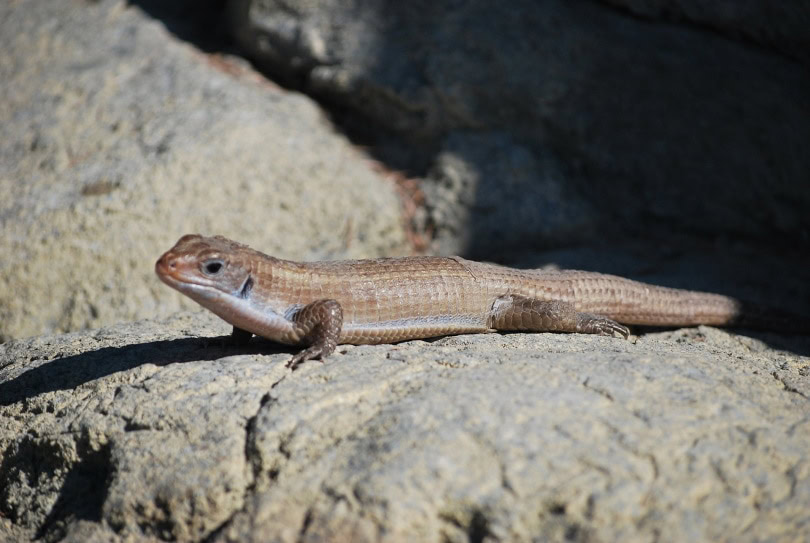
| Appearance: | Banded, orange, tan |
| Length: | 18 inches |
| Lifespan: | 20 years |
| Price: | $20–$50 |
Thick, full-bodied skinks that reach an adult length of around 13 inches, Schneider’s skinks are a lesser-known species that make excellent pets. They’re rather colorful skinks, with a lighter underside and darker top side that’s covered in splotches of yellow and orange.
Schneider’s skinks come from dry, desert regions. They need large enclosures with ample space since they’re terrestrial lizards. Bright lights are necessary with ample places to hide. As carnivorous reptiles, these skinks live on a diet that mainly consists of insects, though they’ll eat just about anything that moves and is small enough to fit in their mouth.
The unfortunate part of keeping a Schneider’s skink is that most of the specimens on the pet market are wild-caught. This makes them a bit flighty and timid when you first get one. However, they’re rather adaptable reptiles. Many of them become accustomed to handling quite quickly and turn out to be docile and handleable pets.
7. Ocellated Skink
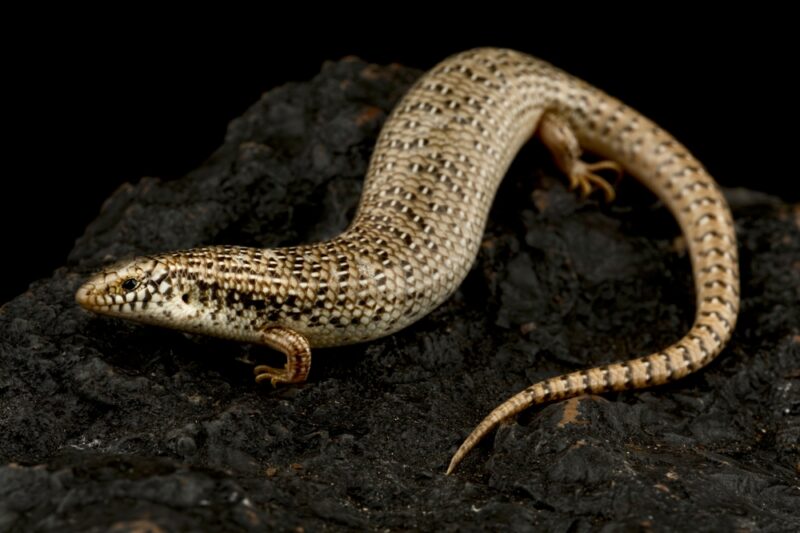
| Appearance: | Brown to yellow, checkered |
| Length: | 20 inches |
| Lifespan: | 8 years |
| Price: | $10–$20 |
Ocellated skinks are native to Greece, Italy, Malta, and Africa. They’re lengthy, getting up to 20 inches as adults. Scales vary from pixelated patterns of brown, yellow, and black.
They love to use open ground for basking, so you don’t have to worry about buying logs or perches. But they need leaves and hides for coverage when they want to relax. They also enjoy a nice shallow pool of water to soak in.
Multiple ocellated skinks can share the same enclosure, but keep a close eye on the males. They can get territorial and aggressive with one another.

Interesting Skink Facts
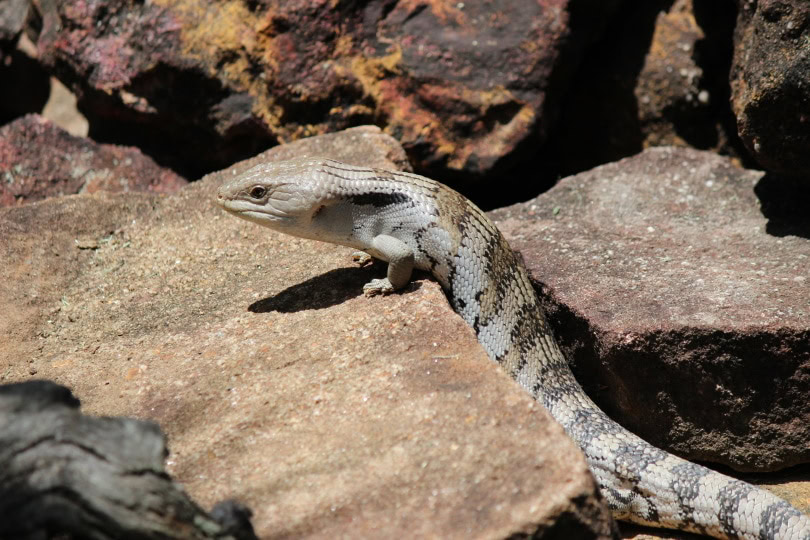
- Skinks’ tails can break off to help the animal avoid danger. The tail will regrow in short order.
- Most skinks are carnivores. Some are insectivores specifically. Only one species is herbivorous.
- While some skinks are diurnal and come out during the day, others are nocturnal, and some species are even crepuscular, which means they’re most active at dawn or dusk.
- Skinks span a drastic range of sizes. Some species can be a mere 4 inches when fully mature, while other species can grow to more than 30 inches!
Do Skinks Make Good Pets?
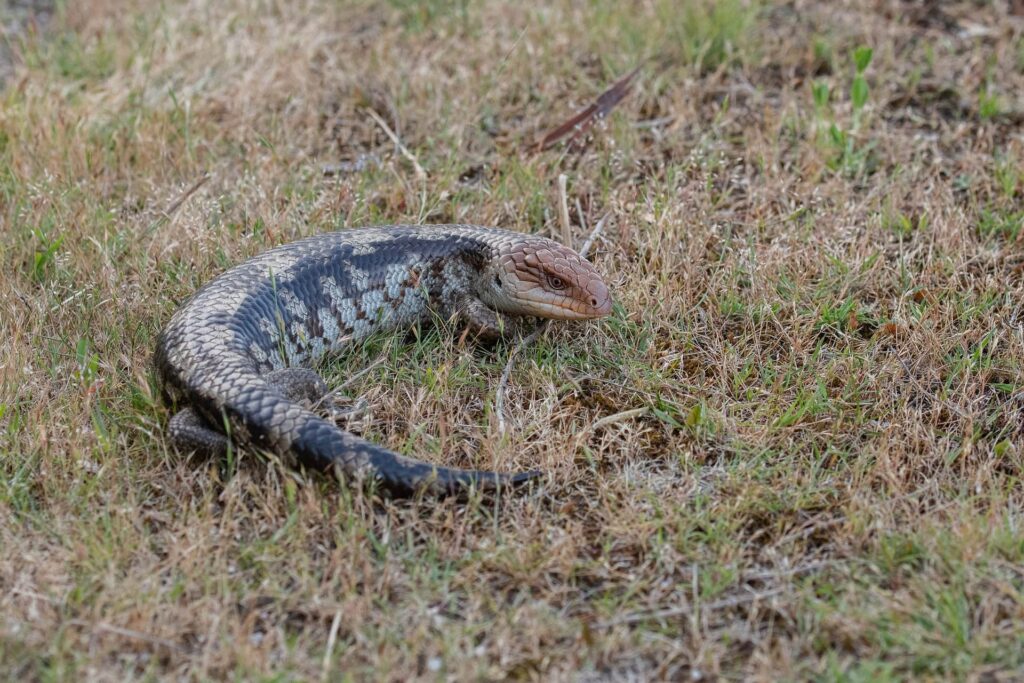
When most people consider keeping a reptile as a pet, they first imagine the most popular and well-known species, such as ball pythons, iguanas, and leopard geckos. But a skink can be just as good of a companion as any of these species. There are many different skinks, though, and not every type is equally suited for domestic living.
Fortunately, skinks are rather easy to care for, which makes them great first-time lizards. If you get the right type of skink, it will likely be docile, amiable, and easy to handle once it gets adjusted to you. Their tanks are usually simple to set up, and most popular species do well in an enclosure with minimal decoration. Plus, many skinks are affordable, making the barrier to pet entry low. They require little care compared to many other reptiles, and their hardy, resilient nature makes it easier to keep a skink healthy than other reptile species.

Conclusion
If you decide that a skink is the right pet for you, there are many different species for you to choose from. The ones on this list represent the best choices for pets, and each has particular characteristics that make them ideal for certain situations. Hopefully, you’ve found one that calls to you and will make a good fit as your next pet!
Next on your reading list:
Featured Image Credit: KobchaiMa, Shutterstock
